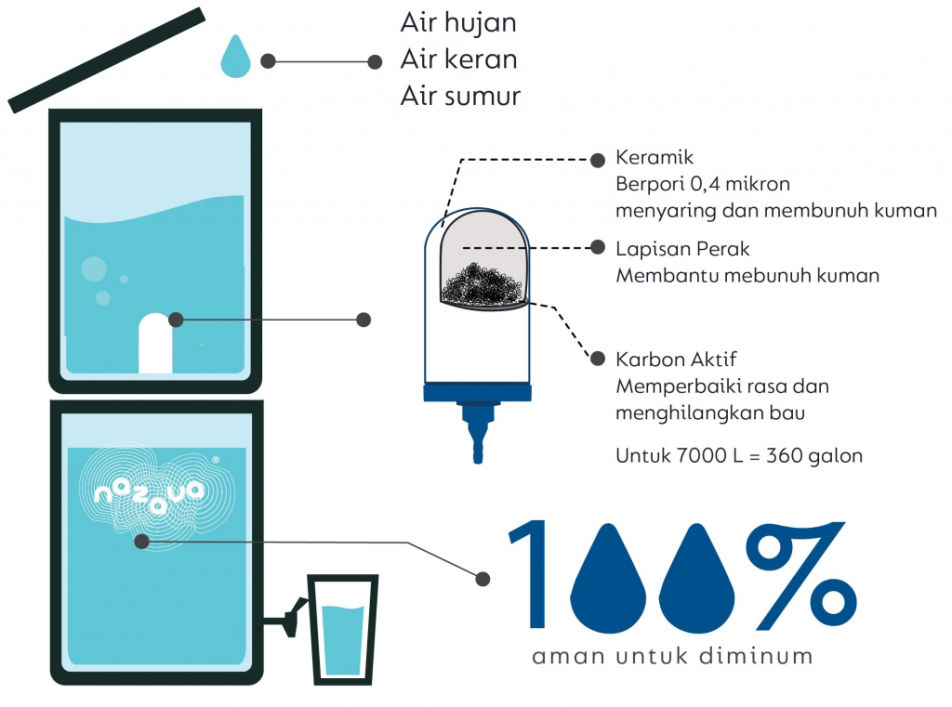
What can be removed from drinking water by Nazava Water Filters?
Summary :
All fresh water sources that are not chemically contaminated even when murky
Water that is currently consumed after boiling can always be used as raw water
Rain water can always be used
Iron & Manganese are removed by 90% and 50 % respectively
Inlet water may be very contaminated with bacteri
What water can be used
The Nazava water filter is designed to remove bacteria from water. However, it also makes murky water clear and removes some chemicals. Nazava is more effective in removing bacteria than boiling is so, a Nazava water filter can always be used to replace boiling.
Removal Max concentration in inlet water
Bacteria (tested by WHO) 99.9% 1000 MPN / 100 ml
Iron (Fe) 90% 3 mg/l
Manganese (Mn) 50% 0.8 mg/l
Hardness (Ca & Mg) 0-10% 500 mg/l
TDS 0% 500 Mg/l
Humic Acids (peat) Coagulate with PAC
All other chemicals Should not exceed local drinking water guidelines
Turbidity (murkiness) No limit
Bacteria
The typical number of bacteria in ground water in Indonesia varies between 5 and 1000 MPN/100ml. 1000 MPN / 100 ml is the number of bacteria in a sewer. Water which such number of bacteria will stink and can also not be used for bathing. This amount of bacteria corresponds to 1000 turds (poos) per swimming pool or a bathtub filled with 1000 butt wipes (http://oasisdesign.net/water/quality/coliform.htm) .
